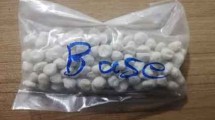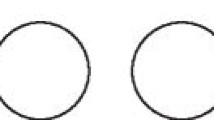Key Points
-
Alerts readers to the fact that chewing acidic gums can pose a potential risk of enamel and/or dentine erosion, particularly when individuals repeatedly refresh with new pieces of gum.
-
Highlights relationships of enamel and dentine erosion to saliva buffering and tooth brushing.
-
The study confirms that non-acidic gum causes no detrimental effects with respect to enamel and dentine erosion.
Abstract
Objectives The primary objective was to determine the erosive effect of expectorated saliva, following chewing acidic gum, on enamel and dentine samples, using a non-acidic gum as a negative control. Secondary objectives were to determine the effect of brushing enamel and dentine samples and the effect of individual saliva pH and buffering.
Design A single-centre, single-blind, placebo-controlled, two-way crossover study.
Setting A clinical trial, involving healthy participants, undertaken at Bristol Dental School and Hospital.
Methods Eight healthy participants expectorated saliva onto prepared enamel and dentine samples while chewing gum (strawberry flavoured acidic gum [active] or peppermint flavoured non-acidic gum [control]). Half of the enamel and dentine samples were brushed before measurement by contact profilometry.
Main outcome measures Mean enamel and dentine erosion, with and without brushing and the relationship to salivary buffering.
Results At 10 days, mean depth of surface loss from dentine samples (95% CI), following chewing of acid-containing gum and subsequent brushing, was −11.34 μm (2.22 μm) and from un-brushed dentine samples was −11.02 μm (1.71 μm). No significant erosion was noted for other groups.
Conclusions Frequent chewers of acid-containing gums are susceptible to dentine erosion even in the presence of good salivary buffering. Enamel erosion was insignificant within the time constraints of the present study but warrants further investigation.
Similar content being viewed by others
Log in or create a free account to read this content
Gain free access to this article, as well as selected content from this journal and more on nature.com
or
References
The Wrigley Company Ltd. Your guide to the benefits of chewing. http://www.wrigley.com/uk/images/benefits_of_chewing.pdf. Accessed 06 February 2011.
Edgar W M. Sugar substitutes, chewing gum and dental caries–a review. Br Dent J 1998; 184: 29–32.
Addy M, Perriam E, Sterry A . Effects of sugared and sugar-free chewing gum on the accumulation of plaque and debris on the teeth. J Clin Periodontol 1982; 9: 346–354.
Collings K L, Rodriguez-Stanley S, Proskin H M, Robinson M, Miner P B Jr. Clinical effectiveness of a new antacid chewing gum on heartburn and oesophageal pH control. Aliment Pharmacol Ther 2002; 16: 2029–2035.
Imfeld T. Chewing gum–facts and fiction: a review of gum-chewing and oral health. Crit Rev Oral Biol Med 1999; 10: 405–419.
Iijima Y, Cai F, Shen P, Walker G, Reynolds C, Reynolds E C . Acid resistance of enamel subsurface lesions remineralized by a sugar-free chewing gum containing casein phosphopeptide-amorphous calcium phosphate. Caries Res 2004; 38: 551–556.
Ly K A, Milgrom P, Rothen M . The potential of dental-protective chewing gum in oral health interventions. J Am Dent Assoc 2008; 139: 553–563.
Bartlett D W, Bureau G P, Anggiansah A . Evaluation of the pH of a new carbonated soft drink beverage: an in vivo investigation. J Prosthodont 2003; 12: 21–25.
Hughes J A, West N X, Parker D M, Newcombe R G, Addy M . Development and evaluation of a low erosive blackcurrant juice drink. 3. Final drink and concentrate, formulae comparisons in situ and overview of the concept. J Dent 1999; 27: 345–350.
Addy M, Hughes J, Pickles M J, Joiner A, Huntington E . Development of a method in situ to study toothpaste abrasion of dentine. Comparison of 2 products. J Clin Periodontol 2002; 29: 896–900.
Hooper S, West N X, Pickles M J, Joiner A, Newcombe R G, Addy M . Investigation of erosion and abrasion on enamel and dentine: a model in situ using toothpastes of different abrasivity. J Clin Periodontol 2003; 30: 802–808.
Hooper S M, Hughes J A, Newcombe R G, Addy M, West N X . A methodology for testing the erosive potential of sports drinks. J Dent 2005; 33: 343–348.
Hughes J A, West N X, Parker D M, Newcombe R G, Addy M . Development and evaluation of a low erosive blackcurrant juice drink in vitro and in situ. 1. Comparison with orange juice. J Dent 1999; 27: 285–289.
West N X, Hughes J A, Parker D M, Newcombe R G, Addy M . Development and evaluation of a low erosive blackcurrant juice drink. 2. Comparison with a conventional blackcurrant juice drink and orange juice. J Dent 1999; 27: 341–344.
Hooper S M, Newcombe R G, Faller R, Eversole S, Addy M, West N X . The protective effects of toothpaste against erosion by orange juice: studies in situ and in vitro. J Dent 2007; 35: 476–481.
Hooper S, West N X, Sharif N et al. A comparison of enamel erosion by a new sports drink compared to two proprietary products: a controlled, crossover study in situ. J Dent 2004; 32: 541–545.
Hooper S, Hughes J, Parker D et al. A clinical study in situ to assess the effect of a food approved polymer on the erosion potential of drinks. J Dent 2007; 35: 541–546.
Lussi A, Hellwig E, Ganss C, Jaeggi T . Buonocore Memorial Lecture. Dental erosion. Oper Dent 2009; 34: 251–262.
Barbour M E, Rees G D . The role of erosion, abrasion and attrition in tooth wear. J Clin Dent 2006; 17: 88–93.
Polland K E, Higgins F, Orchardson R . Salivary flow rate and pH during prolonged gum chewing in humans. J Oral Rehabil 2003; 30: 861–865.
Rugg-Gunn A J, Edgar W M, Jenkins G N . The effect of eating some British snacks upon the pH of human dental plaque. Br Dent J 1978; 145: 95–100.
Lussi A, Jaeggi T, Zero D . The role of diet in the aetiology of dental erosion. Caries Res 2004; 38 Suppl 1: 34–44.
Absi E G, Addy M, Adams D . Dentine hypersensitivity–the effect of toothbrushing and dietary compounds on dentine in vitro: an SEM study. J Oral Rehabil 1992; 19: 101–110.
Kelly M P, Smith B G . The effect of remineralizing solutions on tooth wear in vitro. J Dent 1988; 16: 147–149.
Ganss C, Schlueter N, Hardt M, von Hinckeldey J, Klimek J . Effects of toothbrushing on eroded dentine. Eur J Oral Sci 2007; 115: 390–396.
Ganss C, Hardt M, Blazek D, Klimek J, Schlueter N . Effects of toothbrushing force on the mineral content and demineralized organic matrix of eroded dentine. Eur J Oral Sci 2009; 117: 255–260.
Bartlett D W, Smith B G, Wilson R F . Comparison of the effect of fluoride and non-fluoride toothpaste on tooth wear in vitro and the influence of enamel fluoride concentration and hardness of enamel. Br Dent J 1994; 176: 346–348.
Lussi A, Jaeggi T . Erosion–diagnosis and risk factors. Clin Oral Investig 2008; 12 Suppl 1: S5–13.
Author information
Authors and Affiliations
Corresponding author
Additional information
Refereed Paper
Rights and permissions
About this article
Cite this article
Paice, E., Vowles, R., West, N. et al. The erosive effects of saliva following chewing gum on enamel and dentine: an ex vivo study. Br Dent J 210, E3 (2011). https://doi.org/10.1038/sj.bdj.2011.51
Accepted:
Published:
Issue date:
DOI: https://doi.org/10.1038/sj.bdj.2011.51
This article is cited by
-
Summary of: The erosive effects of saliva following chewing gum on enamel and dentine: an ex vivo study
British Dental Journal (2011)



